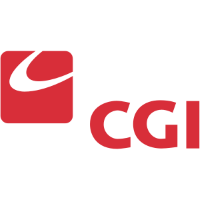
Sun Life Financial Inc
TSX:SLF


| US |

|
Johnson & Johnson
NYSE:JNJ
|
Pharmaceuticals
|
| US |

|
Berkshire Hathaway Inc
NYSE:BRK.A
|
Financial Services
|
| US |

|
Bank of America Corp
NYSE:BAC
|
Banking
|
| US |

|
Mastercard Inc
NYSE:MA
|
Technology
|
| US |

|
UnitedHealth Group Inc
NYSE:UNH
|
Health Care
|
| US |

|
Exxon Mobil Corp
NYSE:XOM
|
Energy
|
| US |

|
Pfizer Inc
NYSE:PFE
|
Pharmaceuticals
|
| US |

|
Palantir Technologies Inc
NYSE:PLTR
|
Technology
|
| US |

|
Nike Inc
NYSE:NKE
|
Textiles, Apparel & Luxury Goods
|
| US |

|
Visa Inc
NYSE:V
|
Technology
|
| CN |

|
Alibaba Group Holding Ltd
NYSE:BABA
|
Retail
|
| US |

|
JPMorgan Chase & Co
NYSE:JPM
|
Banking
|
| US |

|
Coca-Cola Co
NYSE:KO
|
Beverages
|
| US |

|
Walmart Inc
NYSE:WMT
|
Retail
|
| US |

|
Verizon Communications Inc
NYSE:VZ
|
Telecommunication
|
| US |

|
Chevron Corp
NYSE:CVX
|
Energy
|
Utilize notes to systematically review your investment decisions. By reflecting on past outcomes, you can discern effective strategies and identify those that underperformed. This continuous feedback loop enables you to adapt and refine your approach, optimizing for future success.
Each note serves as a learning point, offering insights into your decision-making processes. Over time, you'll accumulate a personalized database of knowledge, enhancing your ability to make informed decisions quickly and effectively.
With a comprehensive record of your investment history at your fingertips, you can compare current opportunities against past experiences. This not only bolsters your confidence but also ensures that each decision is grounded in a well-documented rationale.
Do you really want to delete this note?
This action cannot be undone.

| 52 Week Range |
75.94
90.61
|
| Price Target |
|
We'll email you a reminder when the closing price reaches CAD.
Choose the stock you wish to monitor with a price alert.

|
Johnson & Johnson
NYSE:JNJ
|
US |

|
Berkshire Hathaway Inc
NYSE:BRK.A
|
US |

|
Bank of America Corp
NYSE:BAC
|
US |

|
Mastercard Inc
NYSE:MA
|
US |

|
UnitedHealth Group Inc
NYSE:UNH
|
US |

|
Exxon Mobil Corp
NYSE:XOM
|
US |

|
Pfizer Inc
NYSE:PFE
|
US |

|
Palantir Technologies Inc
NYSE:PLTR
|
US |

|
Nike Inc
NYSE:NKE
|
US |

|
Visa Inc
NYSE:V
|
US |

|
Alibaba Group Holding Ltd
NYSE:BABA
|
CN |

|
JPMorgan Chase & Co
NYSE:JPM
|
US |

|
Coca-Cola Co
NYSE:KO
|
US |

|
Walmart Inc
NYSE:WMT
|
US |

|
Verizon Communications Inc
NYSE:VZ
|
US |

|
Chevron Corp
NYSE:CVX
|
US |
This alert will be permanently deleted.
Sun Life Financial Inc
Amid the bustling urban landscapes and serene suburban expanses of Canada, Sun Life Financial Inc. stands as a beacon of warm, steadfast protection and guidance in the world of financial services. With roots tracing back to 1865, this venerable institution has woven itself into the fabric of Canadian business through a commitment to helping individuals achieve financial independence. Operating primarily in the life insurance and wealth management sectors, Sun Life has expanded its reach from North America to markets across Asia and beyond. The company has built its foundation on offering a diverse range of products, including life, health, and dental insurance, as well as financial planning and asset management services.
The core of Sun Life's business model is predicated on the collection of premiums from policyholders, which it prudently invests in various assets to generate income and ensure long-term policyholder payouts. As the sun rises across time zones, the company adeptly balances risk management and opportunity, leveraging its investment management arm to capture robust returns. Alongside insurance, Sun Life’s asset management segment provides a consistent revenue stream through fees from managing investments for institutional clients and individuals. By tailoring its offerings to the evolving needs of its clientele and embracing digital innovations, Sun Life not only sustains its legacy but also carves out new pathways in the ever-changing financial landscape. This dual focus on preserving wealth and enhancing financial literacy enables Sun Life to thrive and meet the demands of a globalized and increasingly complex marketplace.

Amid the bustling urban landscapes and serene suburban expanses of Canada, Sun Life Financial Inc. stands as a beacon of warm, steadfast protection and guidance in the world of financial services. With roots tracing back to 1865, this venerable institution has woven itself into the fabric of Canadian business through a commitment to helping individuals achieve financial independence. Operating primarily in the life insurance and wealth management sectors, Sun Life has expanded its reach from North America to markets across Asia and beyond. The company has built its foundation on offering a diverse range of products, including life, health, and dental insurance, as well as financial planning and asset management services.
The core of Sun Life's business model is predicated on the collection of premiums from policyholders, which it prudently invests in various assets to generate income and ensure long-term policyholder payouts. As the sun rises across time zones, the company adeptly balances risk management and opportunity, leveraging its investment management arm to capture robust returns. Alongside insurance, Sun Life’s asset management segment provides a consistent revenue stream through fees from managing investments for institutional clients and individuals. By tailoring its offerings to the evolving needs of its clientele and embracing digital innovations, Sun Life not only sustains its legacy but also carves out new pathways in the ever-changing financial landscape. This dual focus on preserving wealth and enhancing financial literacy enables Sun Life to thrive and meet the demands of a globalized and increasingly complex marketplace.
Strong Earnings: Sun Life reported Q3 underlying EPS of $1.86, up 6% year-over-year, and underlying net income of $1.047 billion, up 3%.
Solid ROE: Underlying return on equity reached 18.3%, moving toward the medium-term objective.
Growth in Asia and Canada: Asia underlying net income was up 32%, and Canada saw strong earnings and asset management growth.
Asset Management Momentum: Fee-earning AUM at SLC grew 9% year-over-year. MFS outflows were the lowest since 2021, with notable institutional inflows.
US Business Headwinds: U.S. results were weaker, especially in Group Health & Protection due to higher claims and pricing shortfalls in dental and stop-loss.
Capital Strength: LICAT ratio rose to 154%, and over $400 million in shares were repurchased. Dividend increased by $0.04 to $0.92 per share.
Guidance and Outlook: Management remains confident in medium-term targets of 10% earnings growth, 20% ROE, and dividend payouts of 40-50% of earnings, despite U.S. challenges.











































